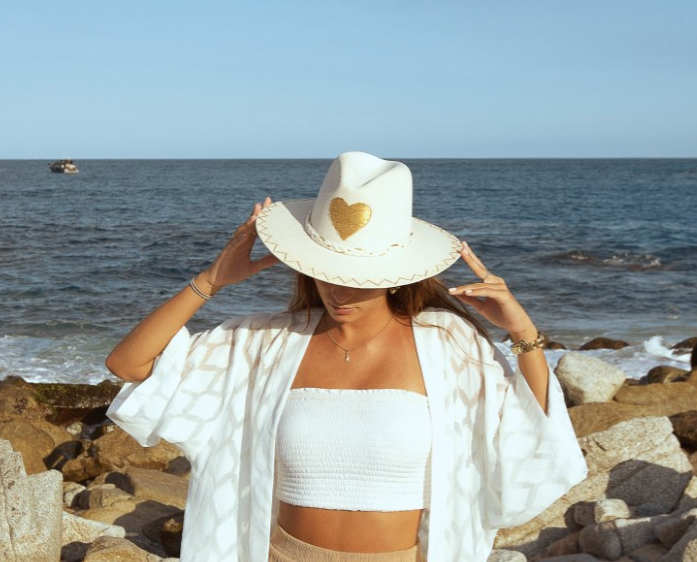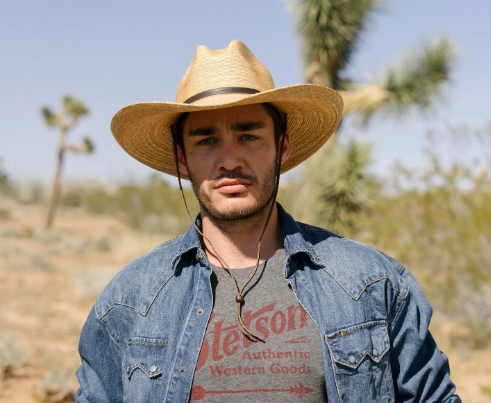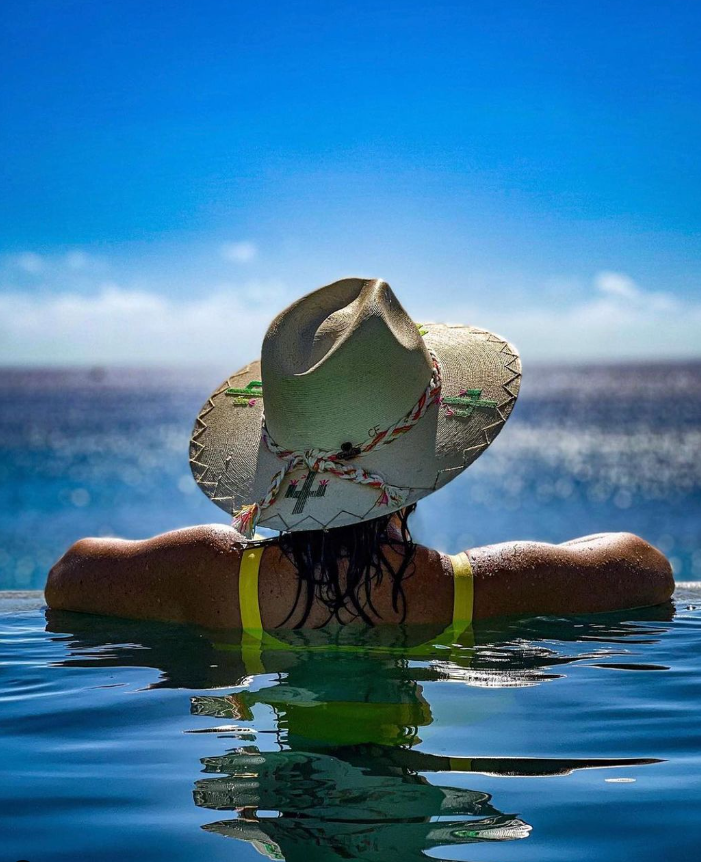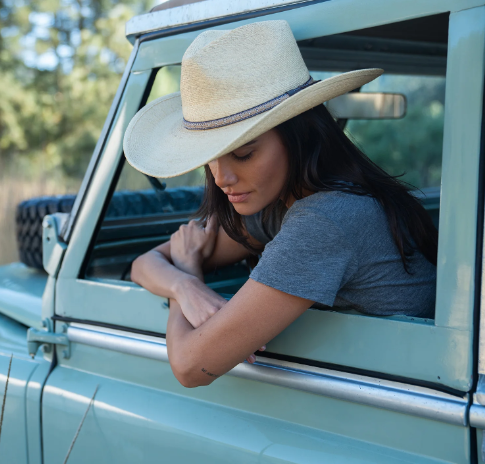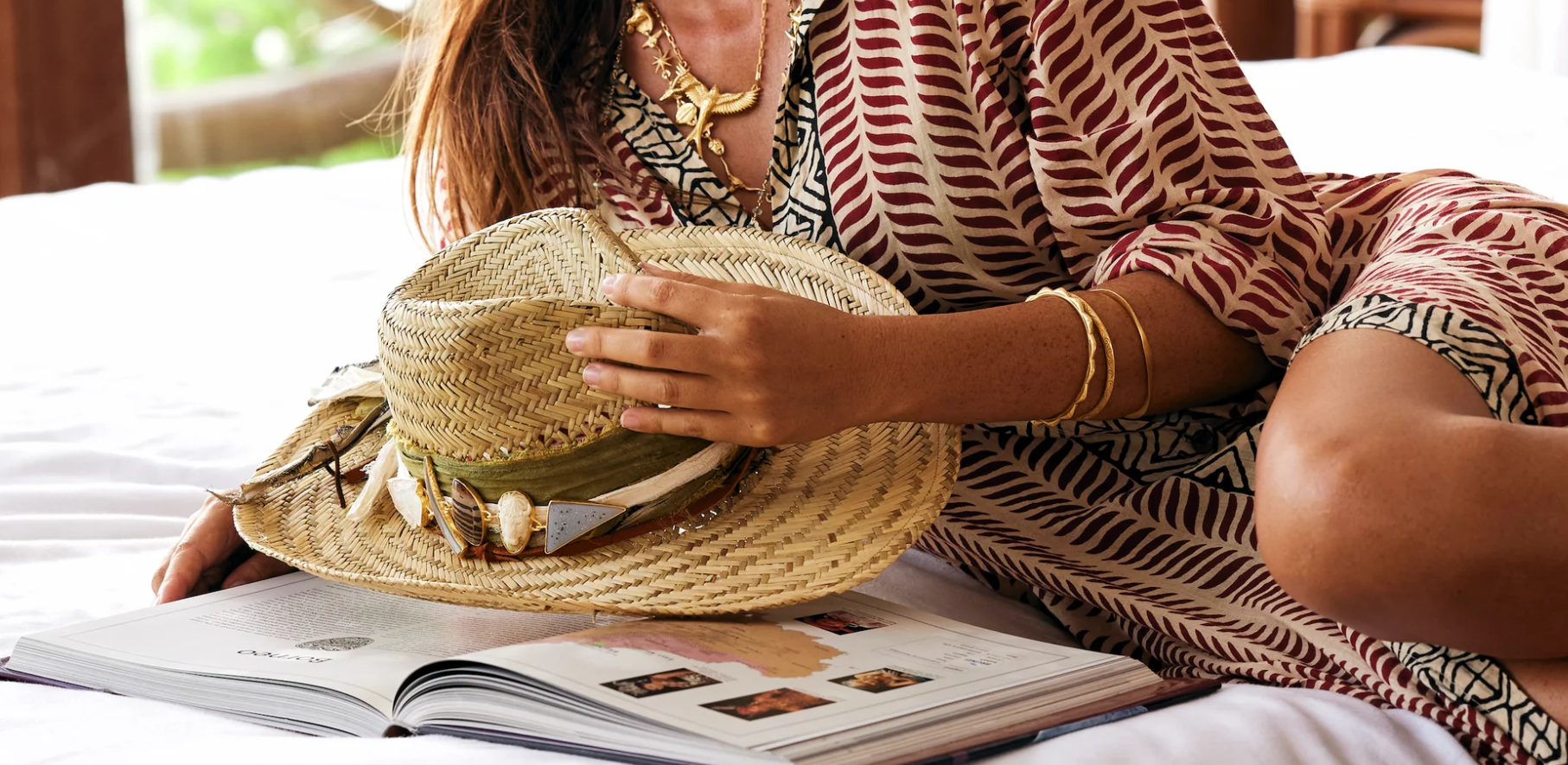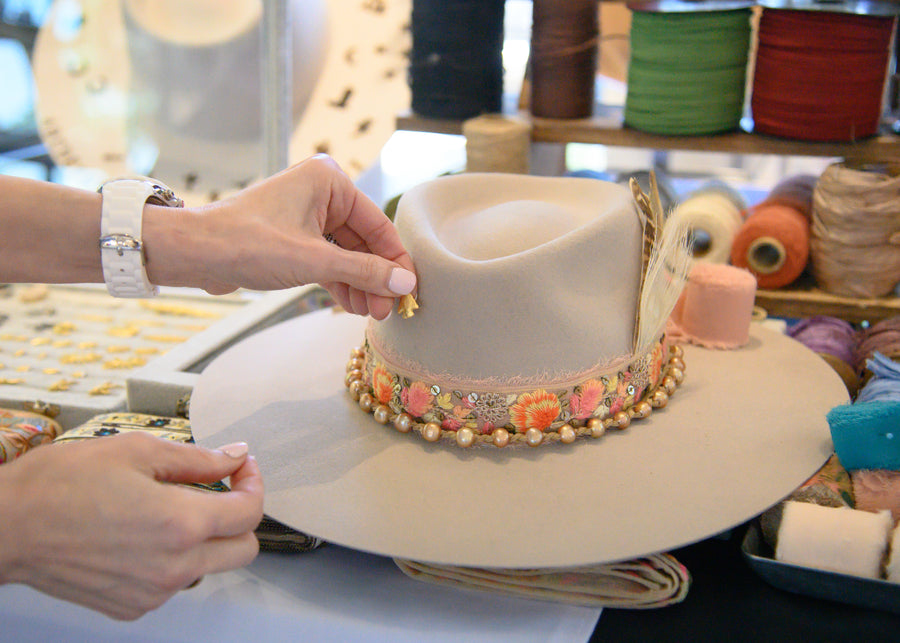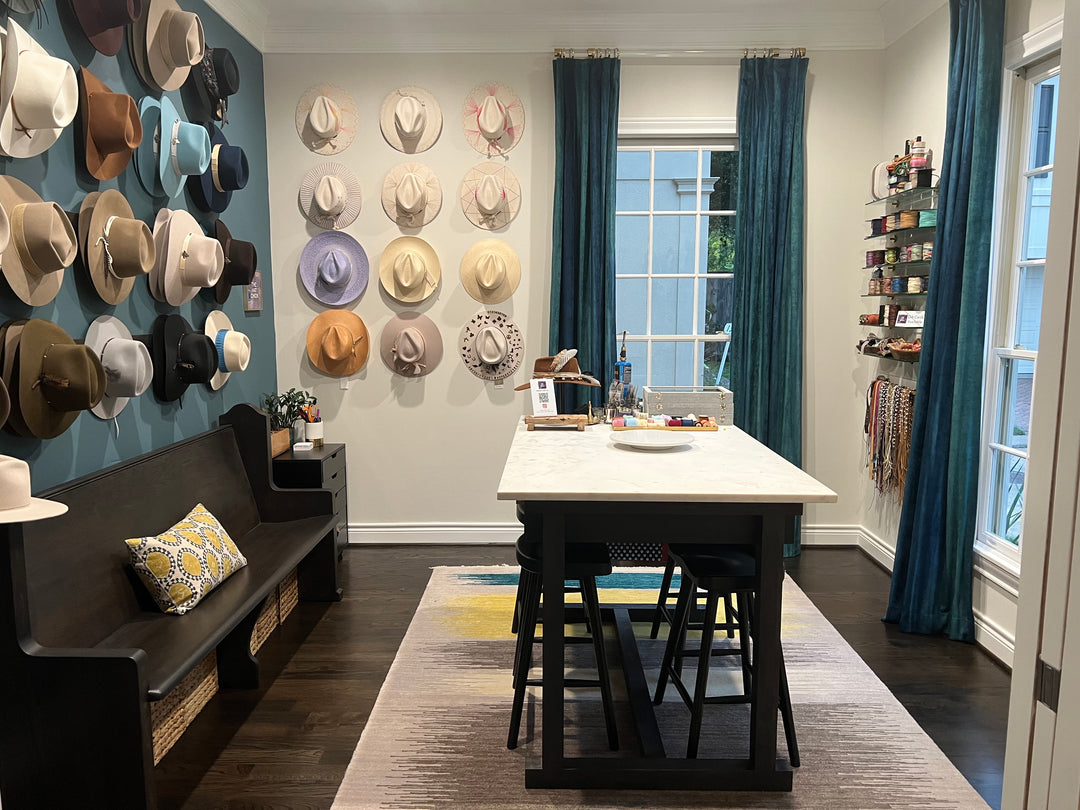Seasonal Hat Transitions: Building a Year-Round Hat Wardrobe

Let's talk hats. Not just any hats – we're diving into those pieces that transform your outfit while actually serving a purpose. I've spent years cycling through seasonal hat collections, learning the hard way what works and what doesn't. Trust me, there's nothing worse than realizing your favorite summer Panama is crushed beyond repair because you stored it incorrectly, or that your expensive felt cowboy hat got caught in an unexpected downpour.
So let's break down how to build a hat collection that transitions seamlessly through the seasons – what to splurge on, what to save on, and how to make sure your favorites last for years.
Essential Hats for Each Season
Spring: When Unpredictable Weather Demands Versatility
Spring is that tricky time when you might need sunscreen and an umbrella in the same day. Here's what works:
Wide Brim Straw Hats: As someone who has been known to burn after 5 minutes in the sun, I consider my large brim straw essential once temperatures climb above 75°F. Most of them are lightweight enough that you won't overheat, but structured enough to look polished. A good large brim transitions perfectly from the baseball field to the beach to the farmers market.
Fedoras: I was hesitant about fedoras until finding the right one – medium brim, neutral tone, not too "hipster coffee shop." Now it's my go-to for spring evenings when there's still a bit of chill in the air but I want something lighter than felt. They are also excellent because I can easily change them up per season with fresh adornments.
Safari Hats: If you're actually outdoors and active (not just pretending to be), a quality safari hat will change your spring experience. I took mine hiking last summer while in Colorado during an unexpected drizzle, and stayed perfectly dry while my hatless friends looked like drowned rats - their words, not mine.
Festival Hats: If you're heading to Round Top Antique Festival in the Texas heat, you need something with personality that can handle sweat. I rotate between two custom festival hats with layered high quality neutral bands that match most of my summer wardrobe. The compliments alone were worth the investment.
Summer: When Style Meets Serious Sun Protection
When the temperature soars, your hat needs to work even harder:
Wide Brim Sun Hats: This hat is up again! Many years ago after my dermatologist gave me a stern lecture about sun damage, I invested in a serious wide-brim hat. I got to work customizing mine with fun embellishments and even added a chin tie so that it doesn't turn into a sail every time the wind picks up. Years and many summers later, my skin is “sun spot” free and the hat looks better with age.
Beach Hats: These are a must and I never go to the beach without one. It more like a “how many do I take?” approach. Beach hats take abuse – sand, salt water, being stuffed in bag or being hauled through airports. We carry genuine imported straw because it holds up better than synthetic. Pick a hat that can take the wear and tear, but that you can also feel great in with multiple outfits and trips. Some of my favorites– the Corazon hats. Just check out the colors and hand embroidery the Corazon hats have to offer.
Fall: When Felt Comes Back Into Rotation
Fall is hat heaven – not too hot, not too cold:
Felt Fedora Hats: Nothing signals seasonal transition like switching to felt. For women, I love a silver belly or dark belly felt that complements autumn colors, while I see most men lean towards a brown hue for flexibility.
Western Hats: Here in Texas we love a good flipped brim western style hat- such as the popular Cattleman style. Earlier this year I customized a silverbelly cowgirl hat with turquoise detailing at The Hat Chick studio in Houston. It's become a signature piece in my client’s wardrobe – dressy enough for evening events but still casual enough for weekend wear. I loved it so much that I wanted to keep it for myself, but I am happy to have released another design into the wild.
Winter: When Protection Becomes Priority
When serious weather hits, you need serious hats:
Premium Felt Hats: Winter is when quality really shows. A good felt hat can weather the harsh winters and not lose shape, despite snow, sleet, and being on the go. The cheaper versions hardly make it through a single season without having to be reshaped- invest in quality. You will appreciate the longer life and quality of the hat.
Custom Winter Designs: If you're in genuinely cold climates, customization is key. My friend who lives up north where there are windy snow storms requested a hat free of feathers and adornments that could get more easily weathered or come off her hat. Customization can be fun but should also keep functionality in mind.
Transitioning Your Collection Through Changing Weather
Winter to Spring: The Awkward In-Between
The transition from winter to spring is like dating someone new – you're not quite sure what to expect day to day. Here's my approach:
-
Don't rush it. I've felt silly pulling straw out too early or keeping them on my head to late into fall. When in doubt, stick with felt until temperatures consistently stay above 70°F or wait until Easter to pull the straw out.
-
Lighten your palette gradually. As the calendar moves from March to April, I move from my black felt to a lighter tan felt before bringing out the straws. It feels seasonally appropriate while I still keep the black in mind for a more formal event.
-
Keep both seasons accessible. Spring weather can revert to winter overnight. I keep my favorite felt hats easily accessible until at least May, even after bringing out the spring collection. When we travel to Colorado during the summer, I get the best of both worlds– straws during the day and felts at night.
Spring to Summer: When the Heat Gets Real
When spring starts feeling like summer:
-
Test run on weekends. I start wearing my full summer hats on weekend farmers market outings and errands before truly committing to them with an outfit. Nothing worse than realizing it’s still too cool out for a straw hat.
-
Check ventilation. That hat that felt nice and breezy in 70-degree weather might be stifling in 90-degree heat. Make sure you transition to a hat that has proper ventilation as the temps are rising.
-
Be realistic about activities. My pristine Gardenia hat is perfect for brunches and outdoor parties but would not appreciate taking a dive into the pool. Believe it or not, one of the most common questions I get is “Can I get my straw hat wet?” . The answer is “no”- straw hats are not waterproof and do not enjoy swimming- not even off the coast of Fiji. Be mindful and realistic about which hat you take where- they each have their purpose and place.
Summer to Fall: Embracing the Coziness
As summer fades:
-
Pay attention to material weight before color. Even if I'm wearing fall colors in my clothing, I stick with straw hats until temperatures consistently drop below 70°F. Nothing is less comfortable than a felt hat when it's still warm.
-
Ease back into structure. Summer hats tend to be more relaxed in shape. I start with my most casual felt styles before transitioning to more structured pieces as fall progresses.
-
Handle with care. My straw hats get a gentle brushing if needed before storage and my felts get a light brush as they come out of summer hibernation.
Fall to Winter: Battening Down the Hatches
When serious weather threatens:
-
Water resistance becomes critical. I treat my premium felt hats with protective spray before the first winter storm hits and be sure to remove them if rain is in the forecast.
-
Secure fit is essential. Winter winds are no joke – I switch to styles with more secure fits to avoid looking like the crazy lady chasing her hat through a parking lot.
-
Don't sacrifice style for warmth. My most insulated winter hat isn't my prettiest, but I've learned to save it for truly frigid days rather than wearing it throughout the season.
Investment Pieces vs. Seasonal Trends
Let's be real – hats aren't cheap if you want quality. Here's where to spend and where to save:
Worth Every Dollar
The Perfect Felt Cowboy Hat: My 20X beaver felt cowboy hat cost as much as a decent smartphone, and five years later, it still looks brand new with basic care. Cost per wear? Pennies. Find a neutral color that works with most of your wardrobe.
Hand-Woven Straw: One of my favorite straw hats is 10 years old and still looks magnificent. Quality straws can have years of wear if properly cared for. Look for tight, even weaving, the quality in the structure and even the sweatband.
Custom-Made Everyday Hat: Have me, The Hat Chick, create a hat specifically for your style and preferences to create a game changing addition to your accessory arsenal. My clients always get compliments on the hats we create and it looks like it was made for them (because it was). If you wear hats more than occasionally, customization is worth every penny.
Where You Can Save
Special Event Hats: That hot pink felt hat that you’ll probably wear just once? The over-the-top sequin piece for a themed event party? Go budget friendly. They'll serve their purpose without breaking the bank.
Trend Colors: This past rodeo season, a muted denim color was trending, and I carry a few beautiful mid-priced versions, so even I picked one up.
Backup Hats: The "car hat" that lives in your back seat for unexpected sun? The one you keep in the garage? These don't need to be heirloom quality, just a decent hat to get the job done.
Real Talk: Hat Care Between Seasons
Hat maintenance isn't complicated, but it's essential:
-
Storage matters. My straws live on a dedicated hat stand. My felt hats rest either hanging off a wall or in a hat can (never on the brim!).
-
Clean before you store. I learned this after finding mysterious spots on hats that had been put away dirty. A sponge or soft brush for felt, a very light damp cloth for straw – simple steps that extend life dramatically.
-
Climate control makes a difference. Heat and humidity can really do a number on hats. My quality pieces stay in climate-controlled spaces, not the attic or garage.
-
Reshaping is worth learning. A little steam (careful with straws!) and knowing how to reshape brims has saved several hats my clients thought were goners.
Wrapping Up
Building a year-round hat collection doesn't happen overnight. I started with one quality piece for each season and built from there, paying attention to what actually worked for my lifestyle. Now I have a collection that transitions smoothly through Texas weather, from the scorching heat of summer happenings to the cool elegance of fall.
Remember – a great hat isn't just an accessory; it’s a reflection of you, it's sun protection, it's personal style, and with the right care, it's an investment that pays dividends for years. Whether you're just getting comfortable wearing hats or refining what you have, focus on quality over quantity and enjoy the process of carefully curating your own personal collection.
Popular categories
